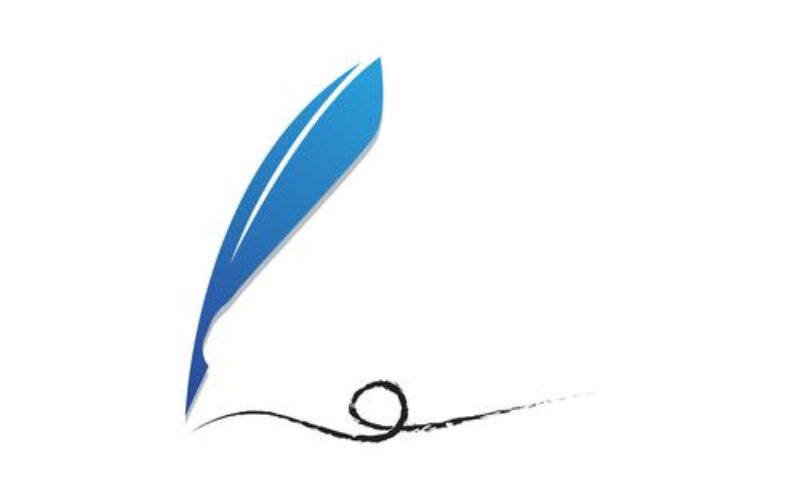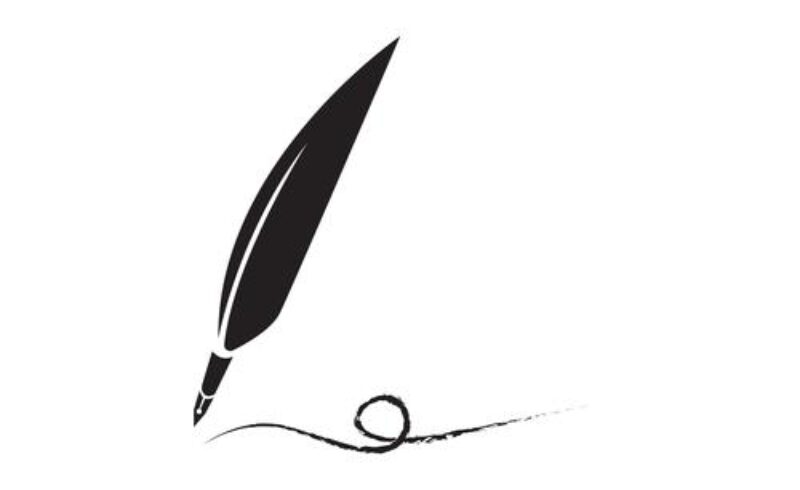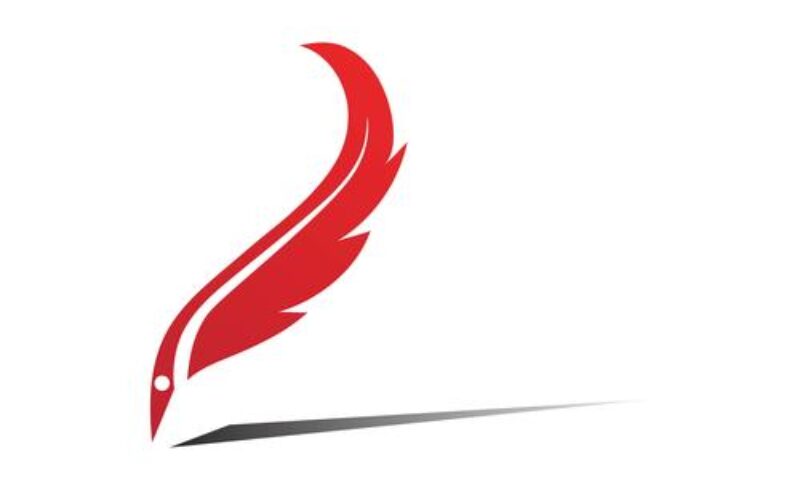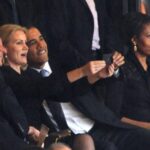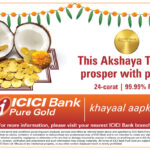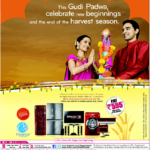Stage Flight: The Emergence of the Confident Consumer
 There are many who believe this increasingly connected virtual world is negatively impacting social skills. People tend to talk lesser to each other all of us have become Phubbers. Kids are replacing time spent playing with other kids with their eyes glued to one of the screens. Social networking sites alleviate any guilt associated with not keeping in touch with loved ones.
There are many who believe this increasingly connected virtual world is negatively impacting social skills. People tend to talk lesser to each other all of us have become Phubbers. Kids are replacing time spent playing with other kids with their eyes glued to one of the screens. Social networking sites alleviate any guilt associated with not keeping in touch with loved ones.While it is a lead in, this post is not to debate the case merits of the “multi-media world”. Suffice to say that there are extremely good arguments on both sides. This post attempts to reveal one such dimension or an insight.
The author believes that despite the virtual world having created these bubbles or silos that we live in, the people today are more willing to let themselves be judged than ever before.
The past decade or slightly more has witnessed the inception and growth of what are termed “reality shows” especially the talent or skill based variety. What separates one from fame and money (read success) today is not chance or opportunity, but their individual skill or talent. These shows and the advent of social networking have given wings and fuelled aspirations of millions. They have given rise to a new breed that does believes there’s a place in the spotlight for them. Whether it is singing, dancing, writing, acting, playing an instrument, cooking or for that matter something as inane as the ability to spit with precision on a target! There is a platform available to showcase ability. Opportunity today is ubiquitous.
Contests, competitions and pageants have been around a long time so what really has changed? It is the scale. The connected world has removed the subjectivity of the talent scouts and placed in the hands of the audiences. While it might not be the right way to do it, it has definitely democratized the process of selection. The opinion of the few is being supplemented with the taste of the masses. This for whatever its worth has lent itself to the perception of “fair play”.
More and more people are venturing out of their protective cocoons, unafraid what the world will say. In fact, the world is the promise and failure or ridicule, a very small price to pay. Talent and skill are just exaggerated manifestations of this insight. The gains need not always be monetary, they can be personal boosters too. The willingness to be judged is evident in every single act of in the social networking space. We put up our photographs, air our views, and share our moods all of which are being judged in real time. Likes, +1’s, re-tweets, views, comments, shares are the new determinants of success.
http://www.youtube.com/watch?v=8OcQ9A-5noM
http://www.youtube.com/watch?v=PPuJ1xRRFtQ
http://www.youtube.com/watch?v=D-qXhHCnEXY
This new found confidence transcends demographics, culture, social strata you name it. From babies to octogenarians nobody seems to have an issue with stage fright anymore. As an audience what is on view ranges from the amazing to the ridiculous. There is no such thing as infamy, popular is the bottom line.
You generate the content and put it out, the seekers of the content will gravitate towards it. The number of home-made or amateur or non-professional efforts that have viraled in the recent past are testament to this. Bloggers and twitterati with following are an integral part of digital marketing plans. Every day more and more content is put up on sites that give a platform to users. From e-books to self-produced music videos it’s all there. Every passing year talent hunts get unprecedented participation and ever increasing social footprint.
Overnight success is no longer an infrequent occurrence or a fairy tale it is expected. There are several more Justin Biebers knocking on the doors of fame.
As they say it’s not spreading your wings but courage that makes you fly!
The Green Mile : Are Brands Walking the Talk?

Are Brands Walking the Talk? When was the last time you paused to think of the environmental consequences of our actions? Wait. Did I just say environmental? Right. Most of us find it hard to believe that the choices we make at an individual level as consumers are of any consequence to anyone else. However, as marketers we have many a time attempted to speak to this very side of the consumer and awaken their conscience. Green Marketing as it has come to be known has been around for quite a few years now. Several brands have incorporated “green” into their scheme of things. As the world environment day nears we shall yet again witness brands trying to associate with green in turn expecting consumers to associate with them/make the right choice.
The question that needs to be asked though is, “Has it had any impact?” How many brands reported back on the impact “the choice” really made in clear quantifiable terms?
It is tough for the cynic in many consumers to actually believe that the brands have their heart and soul in the causes they espouse. The responsibility of making the consumers believe in a purpose beyond the commercial lies with us marketers. It is for us to not make the consumers think of them as “gimmicks”. What good is a commitment that is doubted?
Several brands have in their own way communicated their “Green” intent. Some have coaxed the customers to partake in their cause whilst others have demanded a premium on account of being green. However, not all have done a good job of sustaining (pun unintended) the conversation. The efforts by most brands have tended to be sporadic. A TVC here, a print ad there and oh yes the digital led activation too! In short the treatment has been that of a campaign.
One wonders whether these efforts are less owing to intent and more due to regulatory pressures. Atleast as far as India is concerned there is the mandatory 2% CSR rule (not necessarily to be read as green initiatives though). Are the brands then doing whatever it is they wanted to do in the first place and giving it the green tint? There are no easy answers for that one. The day is not far away when organisation shall need to start reporting their carbon credits along with other financials.
In all fairness there are some brands that have visibly stuck to the task, brands that have integrated green into their way of working beyond product and design. Some are already putting these principle into practice whilst others are preparing to. Some me that demonstrate sincerity and commitment while some smack of commercial opportunism with little follow up. Here is an attempt to showcase some of those efforts that caught the author’s eye. Please judge for yourselves.
Nokia
http://www.youtube.com/watch?v=PaGO4bMZQfk
http://www.youtube.com/watch?v=Rwvn9CM0Oxw
http://www.youtube.com/watch?v=63tEC9Hf5Gg
More on Sustainability from Nokia
Toyota
http://www.youtube.com/watch?v=VT9dOTSnABY
http://www.youtube.com/watch?v=kp6ikptlvik
GE
http://www.youtube.com/watch?v=xvTuoXWCH1c
http://www.youtube.com/watch?v=MYGIVg-jgmY
Killer Jeans
Minus One Project (Cheil/Samsung)
The Green Mile is a long arduous path, there unfortunately are no shortcuts. Brands do not need necessarily turn crusaders, they have every right and responsibility to ensure profits for their stakeholders. Point is, once they signal intent they must walk the talk.
The Art of Electioneering
“Where absolute superiority is not attainable, you must produce a relative one at the decisive point by making skillful use of what you have.”
Karl von Clausewitz, On War 1832
As I write this post I am aware that hundreds like me are analyzing what the world’s largest democracy has witnessed and trying to put in perspective. As the election juggernaut rolled through the country under intense media attention the various angles to the 2014 elections in India have been explored, analysed and have been discussed threadbare.
One of the things that has bubbled up to the top and been referred to often with an accusatory tone is how India’s PM designate was a well marketed product. There is little doubt that what has just concluded is a milestone election in India’s history. One that introduced several elements into the Art of Electioneering. For sure there will be cases made out this election that students of business, social and political science will delve into across universities. I have in a previous post talked about how the Aam Aadmi Party (AAP) captured the imagination of millions in Delhi. What the creators of the Modi campaign have achieved is far bigger and far reaching in its impact.
“The general who wins the battle makes many calculations in his temple before the battle is fought. The general who loses makes but few calculations beforehand.”
SunTzu, The Art of War
In hindsight what has been executed and arguably to perfection have been text book strategies. Be it SunTzu, Porter or Aaker or Prahalad what the strategy cell of Bhartiya Janata Party has done is research, organize, propagate and execute or as I call it the ROPE trick. For the purpose of this discussion I shall attempt a retro-fit of my observations of the campaign to popular models in marketing strategy.
 Along the lines of the adage “Customer First” we’ll take a look at how the BJP campaign tested on understand the drivers for this election and the needs of the voters i.e. Customer Motivation.
Along the lines of the adage “Customer First” we’ll take a look at how the BJP campaign tested on understand the drivers for this election and the needs of the voters i.e. Customer Motivation.The marketing brains behind the BJP campaign ticked these boxes well and proper. They clearly identified the mood of an electorate that was young and aspirational. From an Indian perspective, we have as marketers devoted hours cracking the code and allocated millions of rupees trying to win the youth over. The BJP campaign identified the Youth as mainstream. As per the 2011 census 65% of India’s population is below 35 with a median age of 29 putting an eligible workforce (15-64) at a whopping 430 million, higher than the entire population of the USA!
The strategists at the BJP HQ caught on to this early in the day and having identified their target segment distilled their motivations. So what were the motivators they identified? Speaking of the high level motivators (since each has contributing factors and dimensions), a strong yearning for growth and opportunities, a need re-assert pride, a secure environment and a decisive leadership were what were chosen as the pegs of the campaign.
http://www.youtube.com/watch?v=4OZMHVtnFRE
The campaign planners were also smart enough to place their communication not just on traditional media but where the Youth were on the internet constantly communicating with each other using a variety of social networking tools from BBM to Instagram to Pintrest to Google Hangouts! This enabled BJP to speak to them at an individual level as well as a collective, influential mass. More importantly, this was not just at the time of the campaign. The social leg of the BJP campaign started a couple of years ago with senior leaders writing blogs, active on twitter etc. The buzz around BJP was atleast 3X their nearest competitor in the sociosphere the AAP.
Several articles have been and will get written regarding the extensive use of digital media by the BJP in election 2014. The use of technological wizardry with the 3D rallies or the beat and booth level mass outreach mobile screens carrying their leaders message the campaign exploited every possible touch-point.
So was it just a media and technology blitzkrieg based on consumer (read voter) understanding or was it more?
Here’s where I would introduce another text book model to which in perspectives will answer what the BJP went about doing. This is about understanding your competition better than anyone else. The BJP used this understanding at every step of the way and in all their communication verbal, written or visual to attack them. Again in hindsight, the way the numbers panned out they seemed to have done it well.
The strategy cell of the BJP along with their campaign creators seemed to have blended their understanding of the voter and the ruling Congress to create the perfect potion that cast a spell over the electorate. The silence of the Prime Minister, the reactive nature of the Congress campaign, the disconnect of their leadership all became weapons in the BJP campaign arsenal.
The respective campaign taglines represented the middle of the road, motherhood tenor of the congress versus the more exhortative call for action from the BJP. Much again has been written and talked about this having been a “Presidential style” election. The author disagrees. Granted that this was an election of personalities like never before, but to say that this was the first is incorrect atleast as far as the past four or five elections are concerned. The BJP always has portrayed a leader whether it was the former Prime Minister Atal Behari Vajpayee with the slogan “Ab ki baari Atal Behari” during the 1998-99 elections or L.K. Advani with “Majboot Neta Nirnayak Sarkar”. Even in the past whether declared or not the contenders for the top post were always clear.
Endnote: The victory of the Bhartiya Janta Party in these elections was a result of a very well thought out strategy and smartly integrated ground realities. It was a journey that began well in time. Yes the leader himself had a role to play, but the magic was him resonating with the youth of this country. Voicing their aspirations and promising a better future. Clichéd and overused as it maybe it goes without saying that with great power comes great responsibility. The burden of the mandate will now be on the BJP it is for them to perform to their promise. The nation hopes for deliverance.
#Selfie Obsession: Are Brands Clicking it Right?
 If you are a marketer who has clicked to read about this, chances are, you are as much as at a loss of understanding as I am with this selfie business. Or, if I were to play with words, the disconnect between selfie and business.
If you are a marketer who has clicked to read about this, chances are, you are as much as at a loss of understanding as I am with this selfie business. Or, if I were to play with words, the disconnect between selfie and business.Yes, “buzz” and “talkability” are mandates for any brand that exists in the sociosphere. But in my book they can be considered lead indicators of a brands virulence. The real measures have and should according to yours truly always remain in the business realm.
Selfies seem to be the newest big thing on the internet these days or to put it in real terms calling it one is. The rapid proliferation of social networking if nothing else, has given tremendous fillip to the narcissistic instincts of the digital natives. If one were to observe carefully most us have started leading these digital alter-lives and as much as we hate to admit it are pre-occupied with them. Point is, people have been taking self-pics ever since they put cameras on mobile phones and for as long as social networking sites have been around. The proof lies in the fact that with over 4billion taking pictures with their mobile phones, Nokia has perhaps sold more digital cameras by a factor of A VERY BIG NUMBER than the nearest camera maker and that Facebook carries more pictures than the Picasa’s of the world.
So what started as an alleged faux pas with the Obama selfie has snowballed into an acceptable behaviour over a short span of a few months with the Ellen DeGeneres selfie at the Oscars. So much so that we now have marketing campaigns built on selfies. A departure from an era not so long ago where this would have been the digital activation angle for a larger thought.
Obama @ Mandela Funeral Selfie Ellen @ Oscars Selfie The concept of #Selfie is inherently linked to cosmetic brands and as mentioned earlier several brands decided to ride the selfie trend and as usual some have it together some sadly don’t. As marketers we tend to get swayed and tempted by latest trends. Under the guise of innovation we flirt with these trends with or without a defined purpose. The flavour the past couple of seasons were flash mobs countless brands spent millions of dollars behind these trends. Someone somewhere must pause to think whether having a new angle on the whole thing is sufficient to press the go button.
Here’s a compendium of campaigns that I came across. Do take a look and judge for yourselves which ones actually helped the brand grow and which ones were “Oh! We did that too”.
http://www.youtube.com/watch?v=o6NVxRunn_E
Till such time that we find a new craze the #Selfie Obsession continues.
Buy Another Day
SALE! SALE! SALE! UPTO XX% DISCOUNT ONE DAY ONLY ONE +ONE FREE
We have all as marketers or sales people resorted to promotions where we have cross subsidized or discounted our product to get those extra sales numbers to make our quotas. Along the way we have capitalized on buying occasions in the calendar and even created occasions for people to buy. Whether it’s the seasonal purchases around Thanksgiving-Christmas in the Western world or Diwali-Eid in India marketers have tried most all the tricks in the book to get those extra numbers for the topline.
Like I mentioned, we also forced some occasions as buying occasions wherever we sniffed latent buying behaviour in the culture. Sometimes even manufactured buying occasions around public holidays. Whether purchase for consumption or gifting the calendar is choc-a-bloc. From apparel to mobile phones to financial products everyone has jumped onto the bandwagon.
From the brands perspective it is a lot of preparation and costs. It involves filling (sometimes even stuffing) the channel with products and a promise of a spike in sale. Communication to spread the word and of course whipping the sales guys right down to the frontline.
How many times have we gone back and told our bosses that the market is correcting itself post the spike in sales?
From the consumer perspective though what really is available for them is a deal. Take it or leave it!
Post the internet shopping revolution and the retail revolution however, a deal is pretty much available on an everyday basis! From pizza to mobile phone I can buy it sitting at home when I want, from where I want and with a choice of discounts and promotions to avail. Walk into any organized retail and there are deals for the taking.
Consumers of today seldom get swayed by these gimmicks that we marketers try from time to time. Or may be they do. We tug at their heart strings, seek refuge in culture, the works.
http://www.youtube.com/watch?v=YAcxjrGe7v0
But does the consumer buy gold because it is auspicious to buy or it is a nice feeling to gift or it is available at a price to contrary to the trend and market? Well the jury may be still out on that one.
So the question really is whether there is any merit in creating and marketing these special days. Can brand dollars not be saved and added back to the bottom line instead. Will they continue to bite the bait and buy today because you have built up today as a great occasion to buy or will they just buy another day!
A Bridge Too Far: When VALUE brands dream BIG(ger)
 Dream big they have always told you. To be honest, who amongst us doesn’t want to be the best they possibly can be? Well, that is where reality comes in. In the real world, there’s a difference in the trajectory flights of fancy and engineered flights take.
Dream big they have always told you. To be honest, who amongst us doesn’t want to be the best they possibly can be? Well, that is where reality comes in. In the real world, there’s a difference in the trajectory flights of fancy and engineered flights take.As marketers we have often looked at, wondered about and some of us might even have worked on products or brands that attempted to become a radically different version of their accepted selves.
This post takes a look at a few cases where the brands went against the grain, took the leap but fell or might end up falling short. Of course hindsight is 20/20. Here’s a take on what perhaps the brand bosses might have said to themselves before diving head-first.
“The product is worth it” or “We shall communicate rich” or “We’ll price it premium” etcetera etcetera.
Could work on any given Sunday if you did not have brand baggage to contend with. There are very few brands that the world knows of that entered at the value end of the spectrum and rode up to aspirational end. While some have made successful attempts with new brands, for some others the converse holds true.
Brands as they get built over time create their unique identity. This gets supplemented with the kind of products the brand puts into the market, the brands communication etc. Young & Rubicam’s BrandAsset™ Valuator Model is an interesting method of measuring brand value and relies on four fundamental elements of Differentiation, Relevance, Esteem and Knowledge that it says over time determine the strength and status of a brand.
Now for argument sake let’s construct how a Value brand’s strength and stature graph and compare it to how an aspirational brand would stack up. Intuitively one would say that a value brand does not normally offer great differentiation, is under consideration largely owing to the product category being high on relevance for the consumer, does not have outstanding credentials but makes the cut due to consumer’s familiarity with the brand. Simply put the customer does not mind buying a value brand, the brand deserves you.
An aspirational brand on the other hand is extremely differentiated in the consumers mind, high on relevance as the consumer is thinking he or she is deserving of the brand, held in high regard owing design or innovation pedigree and has an intimate connect with the consumer.
A brands image has tangible and intangible aspects and often it is the quantum of intangible that determines the premiumness/aspirational quotient of a brand. The sources of this “added” value could be the brand name itself, its outlook, its communication or how it is priced. The signature of an aspirational brand is its ability to command a price without having to justify it.
A Maruti Suzuki can make cosmetic changes to its entry level-mid level cars such as the Alto, Wagon-R etc. and continue to be a volume leader, however it fails miserably when it has to justify a high end Kizashi. Similarly for Tata Motors it can be fairly successful with a Safari but not Aria. No amount of “first of its kind” communication tickled any consumer fancy. These brands maybe are too entrenched in their “value” image and need to move mountains to justify even a slight premium.
While the Ferrari’s and the Lamborghini’s of the still fall under the “Unlikely to own” bucket for Indians their less flamboyant European cousins are perceived to be worthy of the premium they charge.
Coming to gadgets and gizmos, having tasted success with their entry and mid segment mobile phones brands like Micromax and Lava with their new brand are attempting to take a slice of the mid-high end pie of the mobile phone market in India. Micromax with Hugh Jackman and Xolo with their positioning pitch high. While one has brand baggage, the other is an attempt at building a brand ground up.
http://www.youtube.com/watch?v=R_UKea_y_dc
Trouble is they neither have the pedigree nor the sit-up and take notice kind of innovation to catapult them.
In the final analysis these brands would have been unable to build a bridge between their “value” roots and “aspiration” dreams.
Another perspective, they just might have moved from being a value brand to a valued brand. Who knows?!
In the Line Of Fire: Dealing with Adversity
 They say that adversity is the true test of character. It is a fact that everyone be it individuals, communities, countries, teams, businesses at some point or the other shall face times that are tough. We as marketers have always looked for examples in war, sports, celluloid, politics, simply put life for understanding and propounding theories with regard to brands and their behaviour.
They say that adversity is the true test of character. It is a fact that everyone be it individuals, communities, countries, teams, businesses at some point or the other shall face times that are tough. We as marketers have always looked for examples in war, sports, celluloid, politics, simply put life for understanding and propounding theories with regard to brands and their behaviour.In the tough times do emerge interesting characters who deal (or don’t deal) with adversity in their own unique way and more often than not brands that we use, buy and deal with fall into one of these. For the purpose of this post I have chosen to label these characters and shall explain the traits of each citing examples from politics, sport, film etc. as applicable.
 The Crusaders: These are people/brands that believe and live for a larger cause and continue to do so even in the times of adversity. Regardless of the tide being in their favour or against the cause remains front and centre to everything including their response. The focus on the larger good often may even come at a high price but are well worth the sacrifice. There are two examples that instantly strike my mind one from the world of business, the other from politics. In both these cases there was a higher price to pay and the brands/people in question did pay.
The Crusaders: These are people/brands that believe and live for a larger cause and continue to do so even in the times of adversity. Regardless of the tide being in their favour or against the cause remains front and centre to everything including their response. The focus on the larger good often may even come at a high price but are well worth the sacrifice. There are two examples that instantly strike my mind one from the world of business, the other from politics. In both these cases there was a higher price to pay and the brands/people in question did pay.
Case 1: Nokia Battery Recall
An isolated incident of a battery exploding became a PR nightmare for brand Nokia, rumour mills working overtime did not help the cause either. The brands response however did not go through the traditional cycle (at least to the outside world) of denial, acceptance, risk assessment and corrective action. The brand behaved in an extremely responsible manner. The risk, probability and reasons were explained to the consumer, a robust mechanism was first put into place and the brand then recalled the batteries in question. Not only did the brand gain consumer confidence it shot up to the #1 position in the Most Trusted Brands survey in the same year!
Case 2: AAP
The jury is still out on this one. The Aam Aadmi Party almost swept the Delhi assembly polls nudging out a formidable Bhartiya Janata Party to form the government in Delhi. The party under severe pressure to deliver on its tall promises in its blink and you miss stint resigned from power on their rai·son d’être; their version of the Jan Lokpal Bill.
 The Fighters: The label is self-explanatory. These are brands or individuals that bring about changes in themselves, work-out hard and train to come back better and stronger. They are extremely competitive in their fabric and hate losing to anyone or anything. They always believe that their best shot is the next one. What shouldn’t be undermined here is the emotion is complemented in full measure by blood, sweat and toil. Here are examples of 3 individuals to build my argument.
The Fighters: The label is self-explanatory. These are brands or individuals that bring about changes in themselves, work-out hard and train to come back better and stronger. They are extremely competitive in their fabric and hate losing to anyone or anything. They always believe that their best shot is the next one. What shouldn’t be undermined here is the emotion is complemented in full measure by blood, sweat and toil. Here are examples of 3 individuals to build my argument.
Case 1: Rocky Balboa
Yes its clichéd and has been over-used but the success of the Rocky franchise over twenty years, if nothing else has taught us one lesson; a fall, a failure, a defeat is not the end, it is the beginning of your climb back to the top. We love it when our heroes have their backs against the wall. We love it when they scratch for every inch and fight with every ounce of strength in their bodies. Somewhere perhaps we all identify with failure and success has always been aspirational. Here is a brand that ruled got written off, yet came out a winner!
Case 2: Yuvraj Singh
It purely is a question of individual assessment, but then blogs are just that aren’t they? Here is a guy who was perhaps at the peak of his prowess. The quintessential watch out for this guy from the start he delivered big time and was the hero of India’s 2011 ICC World Cup triumph. Then followed the fight with cancer and his amazing return to health and fitness in the span of a year. His performance have been debated and arguably have been patchy and nowhere near his best. As much as we love making heroes we seem to love pulling them down even more. Yuvraj as I write this piece has his back to the ropes and carries the burden of India’s loss in the ICC World Cup T20 finals. A 100 bucks say that the story ain’t over.
Case 3: Steve Jobs
This I use as an example from the world of business. A man who was kicked out from the very company he founded. Did his time and came back with a bang! The brand Steve Jobs was as much about not giving up as it was about innovation. Whether in life dealing with his ill-health or in business the approach and resolve remained consistent.
All the of the above had perseverance and preparation in common apart from a come-back.
 The Rabble-rousers: These are the wise guys the smart Alec’s or the sly foxes of the world. Their method of dealing with trouble is to create diversions or smoke-screens. They are also the brands/people that pick, point to and amplify flaws in their competition when themselves in trouble. Yes as much as we would like to disbelieve the Dirty Tricks Department does exist and the if I am bad he’s badder game has been played in sports, politics and business alike. To avoid controversy I will not cite examples or names but would point out to a two political outfits in a prosperous western state of India. They are by no means the only examples of fighting adversity with diversion.
The Rabble-rousers: These are the wise guys the smart Alec’s or the sly foxes of the world. Their method of dealing with trouble is to create diversions or smoke-screens. They are also the brands/people that pick, point to and amplify flaws in their competition when themselves in trouble. Yes as much as we would like to disbelieve the Dirty Tricks Department does exist and the if I am bad he’s badder game has been played in sports, politics and business alike. To avoid controversy I will not cite examples or names but would point out to a two political outfits in a prosperous western state of India. They are by no means the only examples of fighting adversity with diversion.
 The Faders: These are the kind that never stood up and fought. For reasons best known to them they never responded to the situation or put up a fight. They laid down their weapons and turned their backs to the situation.
The Faders: These are the kind that never stood up and fought. For reasons best known to them they never responded to the situation or put up a fight. They laid down their weapons and turned their backs to the situation.
Case: Dr. Manmohan Singh
Hailed as the father of India’s liberalization and economic surge the Prime Minister of India has been under the pump for close to two years and there seems to be no end in sight. The media and opposition alike have accused him of everything including being weak, inactive, indecisive etc. For a brand that he once was his “history will judge me kindly” press conference was a sad sight to watch.
 The Deservers: These are the brands/people that deserved what they got. They eroded and abused one of the core components of a brand Trust. Their vehement denial of any wrongdoing and desire to retain the high pedestal dragged them into infamy, deservedly so.
The Deservers: These are the brands/people that deserved what they got. They eroded and abused one of the core components of a brand Trust. Their vehement denial of any wrongdoing and desire to retain the high pedestal dragged them into infamy, deservedly so.
Case 1: Lance Armstrong
Individuals and businesses alike would have taken inspiration from Lance Armstrong. However, the web of deceit that he spun left a bitter taste in the mouths of everyone who believed his incredible tale of will over all else! The collateral damage was the loss of reputation for the Lance Armstrong Foundation that did genuine good work for and on behalf of cancer patients. Today it exists under the name of LiveStrong and a stigma.
Are these characters exhaustive, are there more? The author believes that the characters though not exhaustive are definitive of what one gets to see.
To close I would like to draw attention to an article titled “The Inevitability of Fires” by Shekhar Swamy of RK Swamy BBDO fame in the book Brands Under Fire.
In his article Swamy talks about how crises are inevitable and on the importance of TRUST and TRUST Balance, relevant excerpts as below.
It is a truism that any crisis can confront any brand or company at any time. It’s not a question of whether any crisis will occur in a brand’s life. It is only a question of when.
At the core of all successful brands lies that big T word-TRUST. When that trust is violated, the reaction is one of hurt and suspicion that can easily turn to anger and rejection.
The only way to be ready for any crisis is to continuously build and hold a vast credit balance of TRUST vis-à-vis the consumer. Indeed this is true in any relationship. As long as there is a credit balance, one can draw on this in times of crisis.
The Crusaders and Fighters make credits on account of their actions into their TRUST Balance, the Rabble-Rouser perhaps manages to get away with neither a credit nor a debit, the Faders loose credit significantly and the Deservers are the ones who go bankrupt!
Lost In Translation: Do Unrelated Brand Extensions Erode Brand Value In The Long Term?
 Its election time in India. Starting April 07, the world’s biggest democracy shall go in for a marathon round of voting that would be spread over a month. The election jamboree has several contestants and in the fray are people from different walks of life. The noteworthy ones though are the contestants who have been in the public consciousness but for totally different reasons. If celebrities be considered individuals who are brands that they are courtesy their achievements/fame in their original profession. Their foray into politics therefore, is akin to a brand extension.
Its election time in India. Starting April 07, the world’s biggest democracy shall go in for a marathon round of voting that would be spread over a month. The election jamboree has several contestants and in the fray are people from different walks of life. The noteworthy ones though are the contestants who have been in the public consciousness but for totally different reasons. If celebrities be considered individuals who are brands that they are courtesy their achievements/fame in their original profession. Their foray into politics therefore, is akin to a brand extension.Now as marketers we are familiar with extensions and have seen many such examples. It is the author’s humble opinion that brand extensions into un-related categories are detrimental to the brand. Now I do not have empirical evidence to back this but more often than not, the brand attributes that made the brand successful in its space would not resonate with consumers in an un-related space. Yes there have been brave attempts at looking at a core set of values and carrying forward those elements that are relevant to the spaces related or otherwise that the brand is being carried into.

Since there is a constant back and forth amongst marketers regarding brands as people and people as brands (also the starting point of the current discussion), it would only be fair to look at things through Kapferer’s Brand Identity Prism
Just to refresh the model suggests that there are six facets to brand identity. As with individuals there is what gets projected and communicated and there is what gets received and understood.

- Physique: The brand in Its physical/tangible form eg. colour, packaging, product form etc.
- Personality: How the brand projects itself. Fun, young etc.
- Culture: A set of values that feed the brand.
- Relationship: the brand has with its consumers or stakeholders i.e. aspirational, inspiring, motivating, ostentatious etc
- Reflection: An image a brand creates regarding who its typical user would be. Example Blackberry with QWERTY phones for executives.
- Self-image: What the brand does to its consumer’s image of self. For example, ladies hand bags from fashion brands perhaps project “I can afford it” for a bulk of their consumers.
Coming back, the contestants in this election range from the “have-beens” to the “could not have beens”. Movie stars, sports persons and business icons they are all there. If one were to critically assess any one of them with respect to the brand that they have built in terms of elements 2 through 6 listed above with the assumption that physique is something they cannot easily change, most would find diminished relevance of their established identity in the new space.
Yes there have people who have translated their success in one field into success in another but the examples are few and far between.
I will defend my case with two examples one a business brand that made an extension into an unrelated field, another an individual. Both brands that attained dizzying heights forayed into an unrelated spaces and ended up eroding if not decimating brand value in the final analysis.
Exhibit#1 The individual: Amitabh Bachchan arguably India’s biggest movie star and an icon for millions of Indians across generations. The Big B as he is popularly referred to made according to him one of the biggest mistakes in life when he chose to enter politics. A super-star he contested elections from Allahabad, UP, India and dislodged a stalwart. What followed were years of turmoil as he got embroiled in allegations of corruption that tarnished his image. It took Amitabh Bachchan the brand over a decade to rise from the ashes, a deed that not all can perform.
http://www.youtube.com/watch?v=6jj7z7rt_9E
Exhibit#2 Kingfisher: Originally a beer brand it was extended to an airlines. The brand attempted to translate “the good times” value to the service industry. From offering a low-fares to the concept of premium economy the brand threw everything including the kitchen sink at the customers. Perhaps one of the better executed transitions only from a process standpoint. The change in logo from a perched Kingfisher to a flying one, the launch and the initial follow through were commendable. However, the ambitions were all consuming. The brand and the business were unable to reduce the revenues vs expenses gap and finally the airline operations that commenced sometime in 2004-05 came to a grinding halt in 2012-13. There is sure to have been damage of the episode on Kingfisher the beer brand, pretty sure some enthusiasts would be out there collecting the before and after data for Kingfisher.
The Sound of Music: KaChing!!
 Rare would be the people who’d say they dislike music. That being said how many of this majority that loves music would be willing to make an “effort” either monetary or physical to acquire music. We have been living in the age of digital music for almost a generation now. The era of vinyl discs (gramophones), audio cassettes and compact discs is long gone. With that has also gone the tangible aspect of music. Piracy has afflicted music industry for a while now. Somehow when it comes to copying, sharing and transferring music it is not a question of scruples. There were days we’d get the music dubbed from one cassette to the other today we just transfer it from one memory stick to the other. One of the leading record labels in India started off distributing pirated content and illegal covers. The readers of this post may belong to different generations but almost all would be guilty of acquiring music in, to mildly put it, not a legal way. For most of us therefore music is “Free”. Chris Anderson in his book by the same name goes on to define and describe various kinds of free. Piracy he says is an imposed form of free.
Rare would be the people who’d say they dislike music. That being said how many of this majority that loves music would be willing to make an “effort” either monetary or physical to acquire music. We have been living in the age of digital music for almost a generation now. The era of vinyl discs (gramophones), audio cassettes and compact discs is long gone. With that has also gone the tangible aspect of music. Piracy has afflicted music industry for a while now. Somehow when it comes to copying, sharing and transferring music it is not a question of scruples. There were days we’d get the music dubbed from one cassette to the other today we just transfer it from one memory stick to the other. One of the leading record labels in India started off distributing pirated content and illegal covers. The readers of this post may belong to different generations but almost all would be guilty of acquiring music in, to mildly put it, not a legal way. For most of us therefore music is “Free”. Chris Anderson in his book by the same name goes on to define and describe various kinds of free. Piracy he says is an imposed form of free.With this as a background, creating a music service and offering it to consumers is rather a brave effort especially in a country like India where ahem…scruples are a non-issue. So have brands not made the effort to monetize music? Sure they have, snack sized music in terms of ringtones and CRBT (Call Ring Back Tunes) which has metamorphosed into a multi-crore industry. What about pure play music then? Yes there have been brands that have carried the torch for that as well. With that have emerged different business models for monetizing music as a service. The Apple iTunes store did not launch in India perhaps for these very reasons.
http://www.youtube.com/watch?v=urfAKVjqn4I
Nokia altered its concept and delivery of music radically when it launched its music store and comes with music. There was an evolution in the way “free” music was delivered. Initially, select devices that were positioned as music devices started coming pre-loaded generic content, then exclusive content etc. Eventually, the devices came with buffet style free unlimited music from the store. The model was simple the brand paid and built it into the price of the tangible product i.e. the mobile phone. The consumer was happy since they technically weren’t paying for the music and all you can eat was the smokescreen. Of course charges for data were applicable, which meant data packs therefore a win-win for both the device manufacturers and the telecom service providers.
http://www.youtube.com/watch?v=qPKp4gIy8Yc
Then again there was the desi jugaad that had emerged with the proliferation of SD card enabled mobile phones. Retail stores would sell memory cards and a service that was inbuilt was loading of content music, porn etc. In this model though no one paid for the content, except perhaps the consumer when he desired to refresh the content.
Over the past seven to eight years though the landscape has changed as far as the devices and the telecom services are concerned. There are new players and new leaders today. Music however has continued to rule roost as far as showcased services are concerned. Yes today in India music much like the west also has a visual connotation. Bollywood has seized the opportunity that exists in mobile music rights are sold specifically and separately for mobile today. Airplays on radio and television are invariably accompanied by short-codes for ringtones and CRBT.
http://www.youtube.com/watch?v=urHlRHg8CE0
So if people are actually making money out of it and the consumer seems to think it’s free then some good has come out of it.
Truth is the concept of value is changing, money is not the single determinant of value anymore. Record sales might not be the indicator of success today but YouTube views, ringtone downloads and store downloads sure are.
To close a modification on the law of conservation of energy but with a simple twist based on the TANSTAFL (There ain’t no such thing as free lunch) concept. At the end of the day I am an Engineer with a Marketing degree!
“Value can be created but not destroyed, it can only be transformed from one form to another.”
Whose line is it anyway? Are taglines the changing face of brands?
 Taglines have been around for as long as brands have been, forever! Just like brands there are all kinds of taglines good ones, bad ones and also the what are they trying to says. They have and shall continue to form a part of Brand quizzes the world over. Brand taglines when and where use are an integral part of the brand identity and more often than not define the brand character.
Taglines have been around for as long as brands have been, forever! Just like brands there are all kinds of taglines good ones, bad ones and also the what are they trying to says. They have and shall continue to form a part of Brand quizzes the world over. Brand taglines when and where use are an integral part of the brand identity and more often than not define the brand character.There are brands that have stuck to the same line over years of their existence while some have had their taglines evolve. No wrongs or rights here. Just knowing what works for you best. Wait a minute! Did I just say what works for you? Damn right I did. That is precisely the trip most brand heads are on! Often we forget that as brands establish themselves the consumers become stakeholders, at the end of the day aren’t they the ones giving the equity?
Not so long ago, at one of the organisations I worked with, we were on the hunt for a new creative agency. So started my journey of identifying, short-listing and inviting agencies to pitch for our creative account. The invite was as is the custom accompanied by a brief. A week or more of clarification and discussions happened for the agencies to build their understanding and appreciate the brief. Without exception each of the six agencies that had confirmed participation asked us the same question.
“How amenable are you to changing the tag line?”
The tag line was to all of them and rightly so, the articulation of the brand intent/philosophy. Coming back, our response was of course “Open to discussion for the purpose of the pitch.” We had given the agencies the part that they loved best, a license for a creative tangent.
When they came back all of them, basis the homework they had done gave us their understanding of our understanding, the understanding of our customers and consumers and finally a prescription for where the brand should head. Different yet interesting perspectives all.
Point is, here were a set of people who were actually seeking to receive the messages that we were sending out into space and this was their interpretation of what we were trying to say. Imagine the number of interpretations that would exist in the real world where people are not seeking you out.
How many actually register these one, two or probably five words that we as brand creators and custodians plaster all over the place with our other identity marks? Assuming they are registering it, how unambiguous is our articulation?
Wordsmiths and brand creators within the organisation and the agencies perhaps spend hours and days crafting those magic words to perfection. These words that form the tag line are the brands way of telling the world at large either or all of these things, obviously just an indicative list
- What is our philosophy
- What we are
- What we do
- How we like to do things
- What do we want you to feel
- Where are we headed etc.
We also put frameworks in place with regard to the context, conditions and placement of the tagline on our communication and signage. One other thing that we should as brand custodians review is how often those very words are used as filter for our everyday actions and communication.
For example, what really is Nike’s interpretation of “Just do it” how do they live and execute it in their organisation. Most probably there is a thought through answer for this. However, who really is ensuring or checking to see whether that is the understanding of every employee or bulk of the consumers? Does it matter and if yes, what steps are taken to improve the understanding?
There are brands that use their tagline to communicate their journey or evolution. Thus changing it along the way. Moving it a step closer or a notch higher in terms of its relevance to its consumers. Some even move from the rational to the emotional space during the course of their journey.
For example Domino’s Pizza in India started off with their process and capability based “Nobody delivers better” to “Hungry Kya” trying to own food as a category on to “Khushiyon ki Home delivery” to its present tagline “Yeh hai rishton ka time”. Four taglines in a little under twenty years of history in India.
Another example would be that of Lenovo that went from the more cerebral “New World, New Thinking” to “For Those Who Do”.
There is also an increasing incidence of a local articulation of the global thought. Taglines that used to be sacrosanct and uniform across the globe some years ago now come in a local flavour almost like campaign lines. This perhaps is not just true for taglines alone, some brands are allow multiple versions of their logo to co-exist, transition is not really that high on the agenda.
Some brands like Nokia on the other hand have pretty much dropped their tagline “Connecting People” from its pride of place just below the name for regular use, bringing it out only on occasion.
The rules of the game, perhaps the game itself is changing. Brand identities of today exist in multiple spaces and forms. The role of the tagline just might be changing from registering impact to grabbing attention!
Bringing me to the starting premise what is the line for anyway? For you (the consumer) to understand me or for me (the brand) to tell you what I want to. Is there really any purpose the taglines serve or is it just a ball of wool thrown at the curious cats in the business schools to discuss, debate and write about.
Fellow marketers your opinions please.

